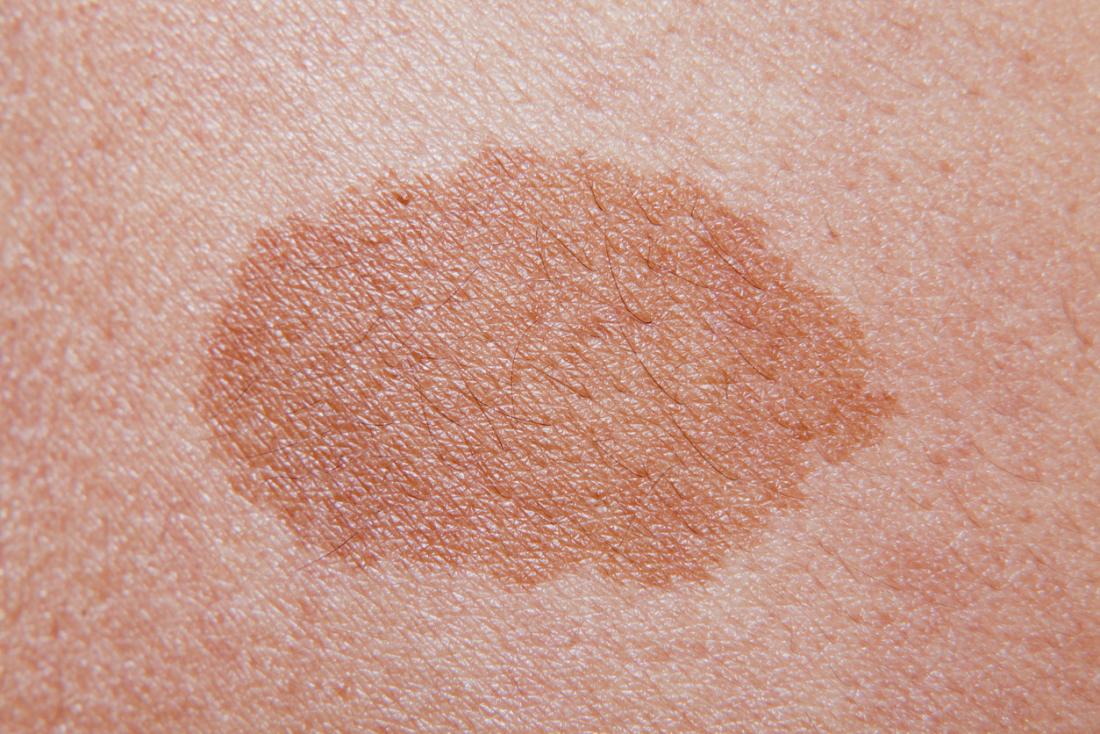Moles, or nevi, typically form during childhood and adolescence, but new moles can appear in adulthood.
Although most moles are noncancerous, or benign, the development of a new mole or sudden changes to existing moles in an adult can be a sign of melanoma.
Melanoma is a type of skin cancer. It accounts for just 1% of all skin cancers but causes the majority of skin cancer deaths, according to the American Cancer Society.
What causes a new mole to appear
A new mole appears when melanocytes, the pigment producing cells in a person’s skin, proliferate, or duplicate, producing the characteristic moles they see on the surface. Melanocytes contain a pigment that gives moles their distinctive coloring.
Moles can be benign or cancerous. Cancerous moles, such as melanomas, develop as a result of genetic mutations. The exact cause of benign moles remains unknown.
Possible causes of a new mole include:
- exposure to ultraviolet radiation
- having fair skin
- genetics
- having a weakened immune system
Types of mole
Moles fall into different subtypes based on their attributes. Types of moles include:
Common mole

Common moles can appear at birth or later in childhood. These moles usually appear on areas of the skin that a person exposes to sunlight.
A common mole typically has a round, symmetrical appearance with a smooth surface and a defined border. Common moles are relatively small, measuring less than 5 millimeters (mm) in diameter.
These moles rarely develop into cancer. However, people who have more than 50 common moles may have a higher chance of developing melanoma, according to the National Institutes of Health (NIH).
Congenital mole

Congenital moles, or birthmarks, are present at birth. Congenital moles can vary drastically in size with some being quite large.
While these moles are usually benign, having a congenital mole, especially one that is very large, can slightly increase a person’s risk of developing melanoma.
According to one study, the lifetime risk of developing melanoma ranges between 10%–15% in people with very large congenital moles. However, figures may vary from study to study.
Atypical mole

Atypical moles, or dysplastic nevi, can develop anywhere on the body and usually appear larger than other mole types.
Their color and texture can vary, and they usually have an uneven border that fades into the surrounding skin.
These moles usually contain multiple colors, such as pink, red, tan, and dark brown.
According to the American Cancer Society, some atypical moles may become cancerous. However, most atypical moles do not develop into melanomas.
Since atypical moles may show some similar characteristics to melanoma, people should visit their dermatologist to be sure that there are no concerns.
Spitz nevus

This rare type of mole looks a lot like melanoma, but it is not cancerous. It usually develops in fair skinned children and young people under 20 years old.
Sometimes, doctors find it difficult to distinguish between a spitz nevus and melanoma and may recommend its removal as a preventive measure.
Spitz nevi grow quickly and can vary in size from millimeters to a centimeter or so in diameter. Other characteristics of spitz nevi include:
- round, symmetric shape
- smooth surface
- lines of pigment radiating in a starburst pattern
Warning signs
Although most moles are benign, people should see their doctor if they notice a new mole or recent changes to existing moles.
Warning signs to look for in an existing mole include:
- changes in color, shape, or size
- pain
- bleeding
People can use the American Cancer Society’s ABCDE rule to spot potential melanomas. ABCDE stands for:
- Asymmetry. Half of the mole looks different than the other half.
- Border. The mole has irregular, jagged, or blurry edges.
- Color. The mole contains a mixture of different colors.
- Diameter. The mole is bigger than 6mm in diameter.
- Evolving. The shape, size, or color of the mole changes.
Other symptoms to watch for include:
- lightening of a mole, including a white halo around its edge
- bleeding or discomfort from the mole
- a mole that looks very different than the person’s other moles
Some dermatologists may recommend that people take monthly pictures of areas with lots of moles, such as the back, in order to spot changes.
Checking areas such as the nails, feet, and hands are also important as melanomas can also arise in these locations.
Summary
Moles are skin growths made of melanocytes. While most moles develop during childhood and adolescence, adults can also develop new moles.
Not all moles that appear in adulthood are melanomas. However, if a new mole arises, or if a person notices any changes to their existing moles, they should visit a doctor or dermatologist for checks.
People who have a family history of atypical moles or melanoma should also have skin checks regularly.
People can use the ABCDE guide to help differentiate between common moles and potential melanomas.
Although doctors consider melanoma the deadliest type of skin cancer, early detection and treatment can significantly improve people’s long term outcomes. Experts estimate that early stage melanoma has a 5-year survival rate of 98%.
